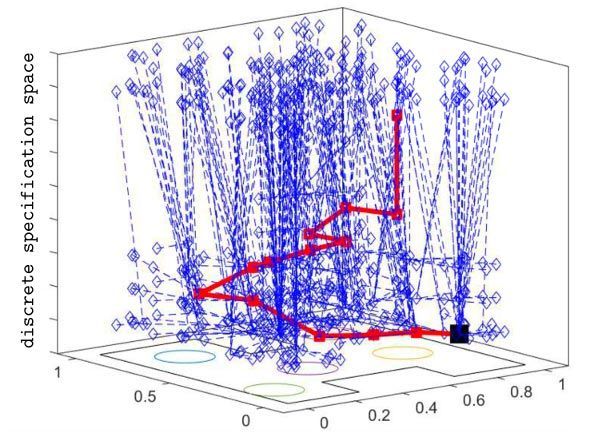Jul 13, 2020
Internet balloons provide 4G coverage in Kenya
Posted by Future Timeline in category: internet
A fleet of balloons launched by Google’s sister firm Loon will provide 4G access to remote areas of Kenya.
A fleet of balloons launched by Google’s sister firm Loon will provide 4G access to remote areas of Kenya.
Just over a month after announcing its latest generation Ampere A100 GPU, Nvidia said this week that the powerhouse processor system is now available on Google Cloud.
The A100 Accelerator Optimized VM A2 instance family is designed for enormous artificial intelligence workloads and data analytics. Nvidia says users can expect substantive improvements over previous processing models, in this instance up to a 20-fold performance boost. The system maxes out at 19.5 TFLOPS for single-precision performance and 156 TFLOPS for AI and high performance computing applications demanding TensorFloat 32 operations.
The Nvidia Ampere is the largest 7 nanometer chip ever constructed. It sports 54 billion transistors and offers innovative features such as multi-instance GPU, automatic mixed precision, an NVLink that doubles GPU-to-GPU direct bandwidth and faster memory reaching 1.6 terabytes per second.

What is more powerful than suction cup and even a vacuum pump, but was not invented by humans?
Answer: a gecko’s foot. NASA has decided to copy the lizard’s incredible gripping technology, which relies on electrostatic attractions, in its Gecko Gripper robot. This is not coming from an internet troll trying to sell car insurance. The space agency partnered with OnRobot, which specializes in finger-like robotic grippers, to create a device that can (so far) lift 14 pounds. The radiation-resistant pads could literally mean a huge step forward for getting around in space.
Researchers from the Peter the Great St. Petersburg Polytechnic University (SPbPU) have discovered and theoretically explained a new physical effect: amplitude of mechanical vibrations can grow without external influence. The scientific group offered their explanation on how to eliminate the Fermi-Pasta-Ulam-Tsingou paradox.
The scientists of SPbPU explained it using a simple example: to rock a swing, you have to keep pushing it. It is generally believed that it is impossible to achieve oscillatory resonance without constant external influence.
However, the scientific group of the Higher School of Theoretical Mechanics, Institute of Applied Mathematics and Mechanics SPbPU discovered a new physical phenomenon of ‘ballistic resonance,” where mechanical oscillations can be excited only due to internal thermal resources of the system.
Astrophysicists have devised a clever way to count up the photons in space, stretching back to the cosmos’ adolescence.
But, he added, the method took about 10 minutes to produce 1,024 random strings, whereas current cryptographic processes would need far faster number generators.
The new technique’s first real-world use will come when it’s incorporated into NIST’s randomness beacon, a public source of randomness for researchers studying unpredictability, Bierhorst said.
But he added that he hopes the experimental setup could one day be shrunk enough to fit on a computer chip and help in the creation of “unhackable” messages.
The findings support many vaccine strategies being used to tackle the new coronavirus.
A team led by scientists at Scripps Research has discovered a common molecular feature found in many of the human antibodies that neutralize SARS-CoV-2, the coronavirus that causes COVID-19.
The scientists, whose study appears today (July 13, 2020) in Science, reviewed data on nearly 300 anti-SARS-CoV-2 antibodies that their labs and others have found in convalescent COVID-19 patients over the past few months. They noted that a subset of these antibodies is particularly powerful at neutralizing the virus — and these potent antibodies are all encoded, in part, by the same antibody gene, IGHV3-53.
Nuclear physicists affiliated with the U.S. Department of Energy’s Lawrence Berkeley National Laboratory (Berkeley Lab) played a leading role in analyzing data for a demonstration experiment that has achieved record precision for a specialized detector material.
The CUPID-Mo experiment is among a field of experiments that are using a variety of approaches to detect a theorized particle process, called neutrinoless double-beta decay, that could revise our understanding of ghostly particles called neutrinos, and of their role in the formation of the universe.
The preliminary results from the CUPID-Mo experiment, based on the Berkeley Lab-led analysis of data collected from March 2019 to April 2020, set a new world-leading limit for the neutrinoless double-beta decay process in an isotope of molybdenum known as Mo-100. Isotopes are forms of an element that carry a different number of uncharged particles called neutrons in their atomic nuclei.

A new approach to designing motion plans for multiple robots grows “trees” in the search space to solve complex problems in a fraction of the time.
In one of the more memorable scenes from the 2002 blockbuster film Minority Report, Tom Cruise is forced to hide from a swarm of spider-like robots scouring a towering apartment complex. While most viewers are likely transfixed by the small, agile bloodhound replacements, a computer engineer might marvel instead at their elegant control system.
